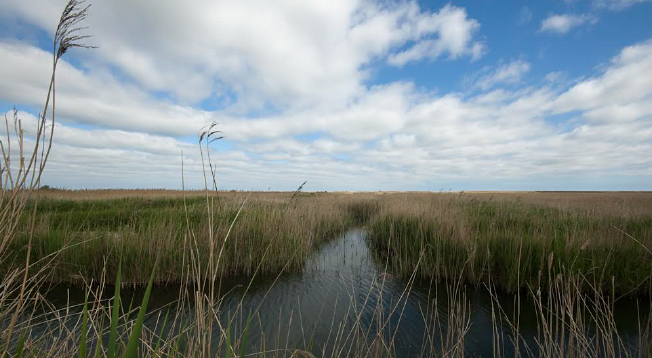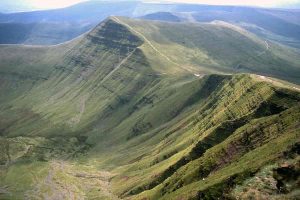
UWTSD’S Dr Martin Bates is a part of a team of university archaeologists working on a £2 million research project to reconstruct an ancient landscape beneath the North Sea.
The archaeologists will use the grant to study the huge area of land called Doggerland, almost the size of Ireland, which was covered by the rising sea levels following the last Ice Age.
Dr Bates, Pleistocene Geoarchaeologist at UWTSD’s Faculty of Archaeology, History and Anthropology, based in Lampeter, said: “Our role in the project is to undertake the recording and sampling of the cores. In order to do this, we have set up a new core storage facility at Lampeter that allows us to store a large number of samples at low temperatures. Storing them in these conditions prevents the decay of material such as plant remains and insects, which are vital to our studies.”
Dr Bates said the project provides a superb opportunity to expand the investigation of submerged landscapes being undertaking elsewhere around the UK. He added: “In this project, we are going to be able not only to model these submerged landscapes remotely but also examine the sediments themselves. This will provide us with information allowing us to recreate the environments in which humans lived immediately before the sea flooded Doggerland.”
The team is being led by Professor Vince Gaffney, anniversary chairman in Landscape Archaeology at Bradford University, who has previously carried out similar work in the English Channel.
The Advanced Research Grant comes from the European Research Council, and could lead to new discoveries about how humans lived in that area from 10,000BC until it was flooded about 7,500 years ago.
Archaeologists, molecular biologists and computer scientists will work together on the new project to digitally reconstruct the area.
Using modern genetics and computing technologies, the researchers will digitally repopulate Doggerland, and monitor its development over 5,000 years to reveal clues about how our ancestors made the critical move from hunter-gathering into farming.
Last February, Professor Gaffney’s team revealed their research into the lost land beneath the water at Bouldner Cliff in The Solent, between the Isle of Wight and England, where they found remains of wheat dating back more than 1,800 years, before history records farming as starting in the area.
On the new grant, Professor Gaffney said: “The only populated lands on earth that have not yet been explored in any depth are those which have been lost underneath the sea.
“Although archaeologists have known for a long time that ancient climatic change and sea level rise must mean that Doggerland holds unique and important information about early human life in Europe, until now we have lacked the tools to investigate this area properly.”
The team will be using the vast remote sensing data sets generated by energy companies to reconstruct the past landscape now covered by the sea. The 3D map this produces will show rivers, lakes, hills and coastlines in a country which had previously been a heartland of human occupation in Europe.
Alongside the work, specialist survey ships will recover core sediment samples from selected areas of the landscape, using them to extract millions of fragments of ancient DNA from plants and animals that occupied Europe’s ancient coastal plains.
Professor Gaffney added: “This project will develop technologies and methodologies that archaeologists around the world can use to explore similar landscapes including those around the Americas and in South East Asia.”
The research team also includes Professor Robin Allaby of the University of Warwick, Dr Richard Bates of the University of St Andrews, Dr Eugene Ch’ng of the University of Nottingham, Dr David Smith of the University of Birmingham, and independent researcher Dr Simon Fitch.

















Add Comment